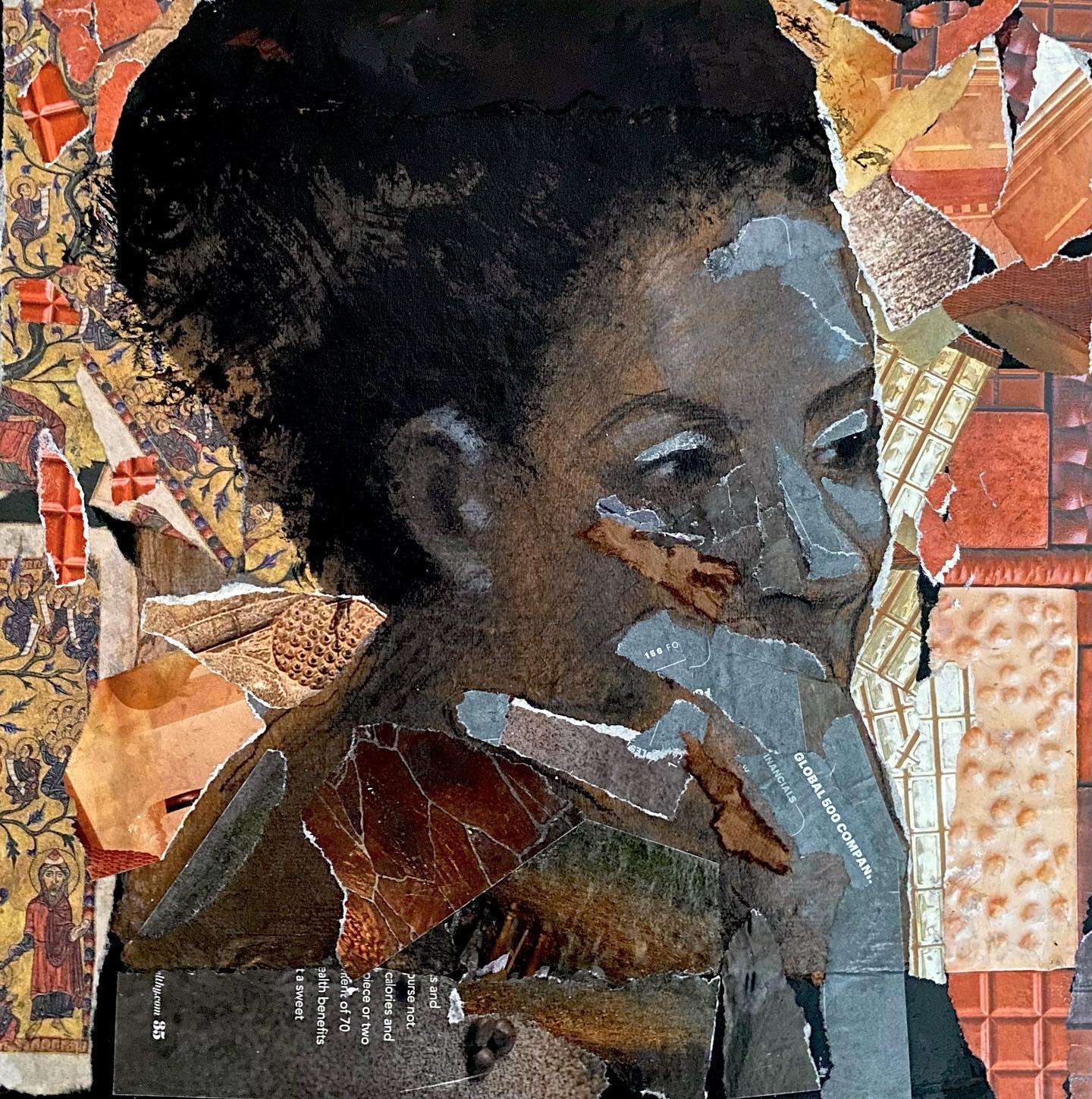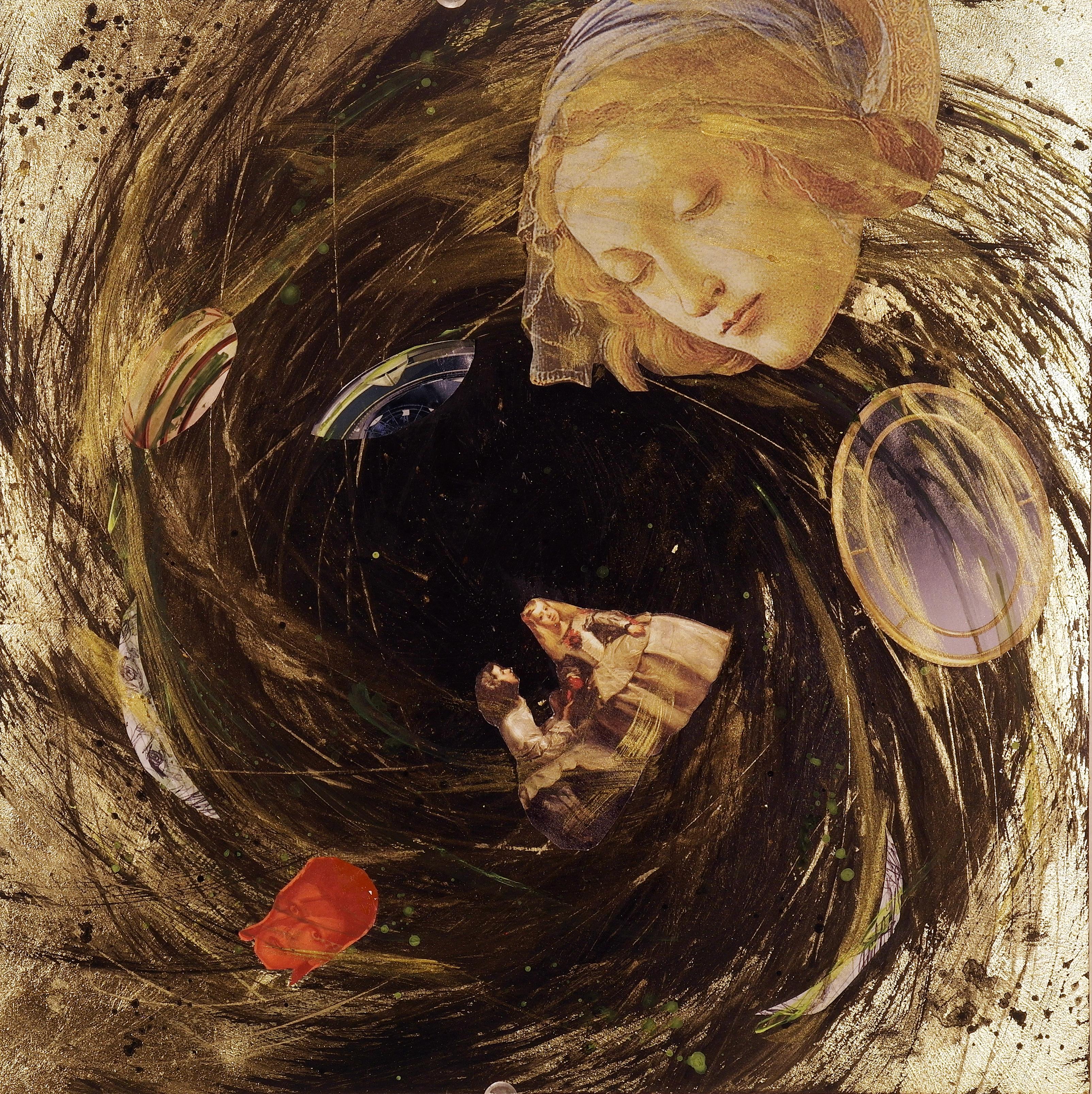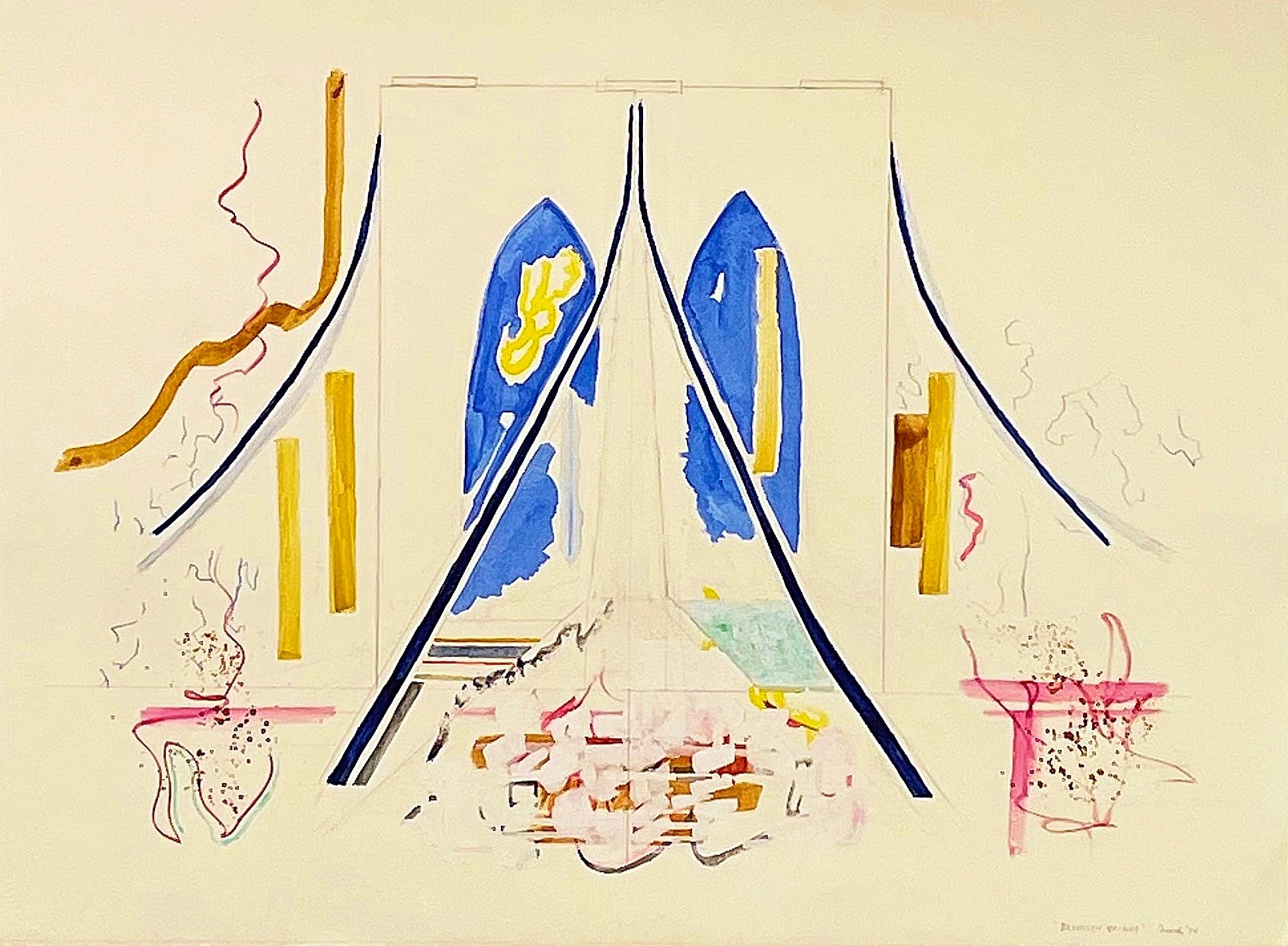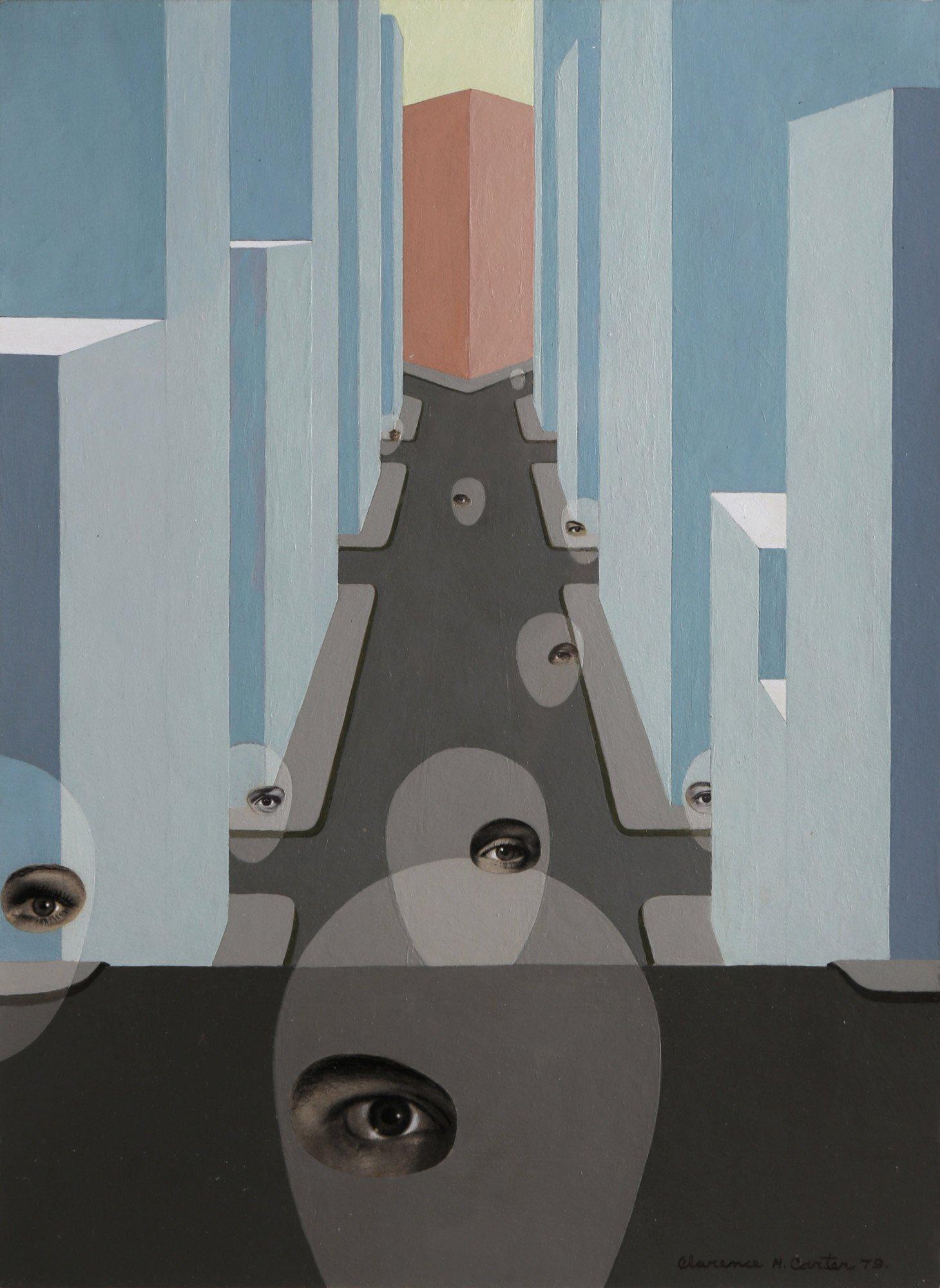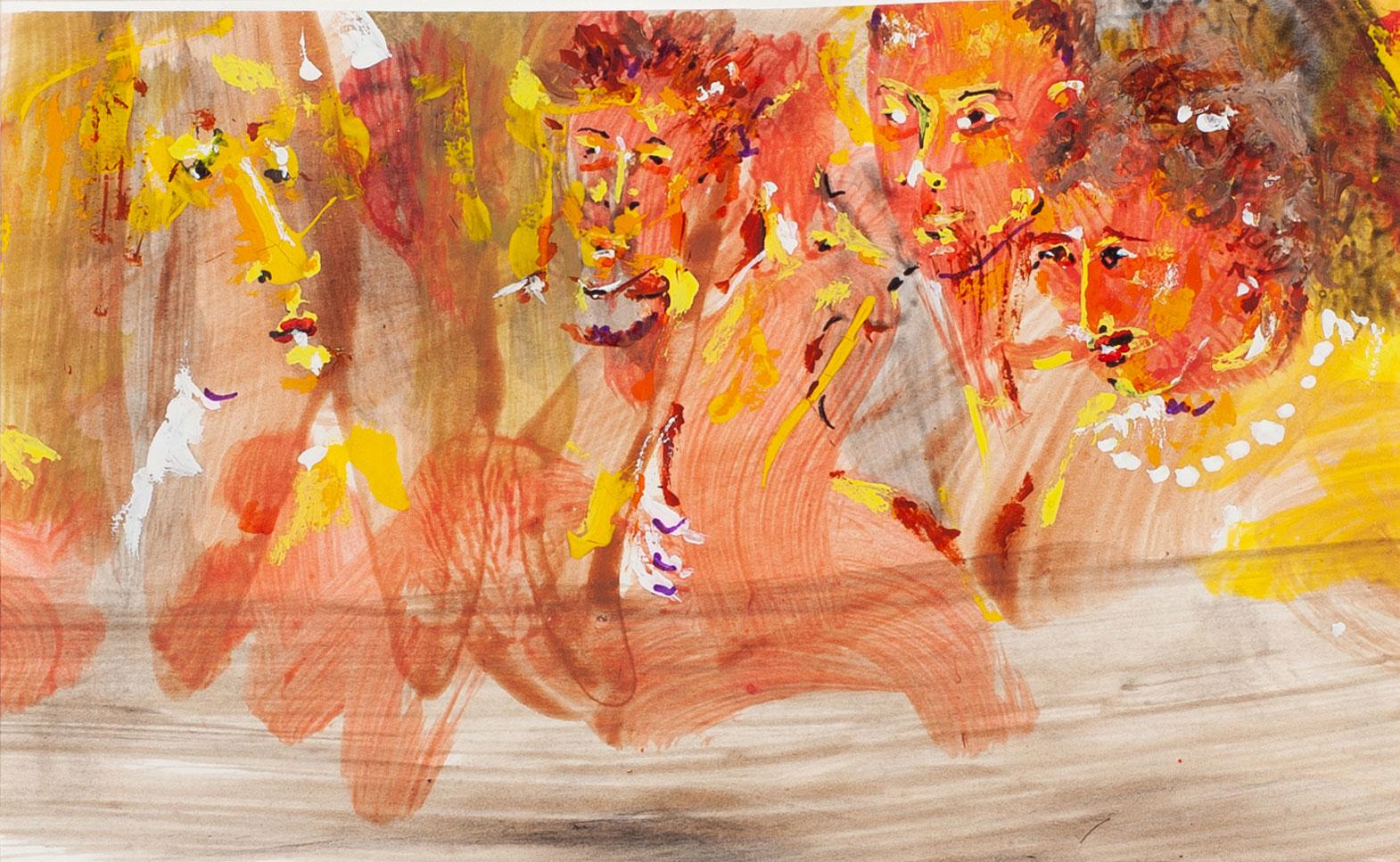Items Similar to Quarry Workers
Want more images or videos?
Request additional images or videos from the seller
1 of 5
Alexi ManyQuarry Workersc. 1930s
c. 1930s
About the Item
This painting is part of our exhibition America Coast to Coast: Artists of the 1930s
Quarry Workers, c. 1930s, mixed media on board, unsigned, 24 x 24 inches, possibly exhibited at Many's Solo Exhibition at the Washington Art League, November 1934; provenance includes Many's sister; note: accompanied by letter of authenticity from Charles Gerhardt noting that the painting was acquired as part of a group of works from Many’s sister who lived in Lebanon, OH and that the group included three works on board in metal frames, none of which were signed, but all of which were ascribed to Many by his sister; presented in original painted metal frame
About the Painting
Alexis Many painted Quarry Workers in the early 1930s after a trip to Mexico which had a dramatic impact on his art. Before this trip, much of Many's work was bright, decorative, carefully rendered, and easy to digest. After his exposure to Mexican muralism and the challenges of the Great Depression south of the border, the overall look and feel of Many's paintings changed. Writing about Many's 1934 solo exhibition at the Washington Art League where Quarry Workers may have been shown, an art critic for the Evening Star wrote, "The current showing . . . represents, to a great extent, if not entirely, the fruits of travel and sojourn in Mexico and marks a considerable diversion on the part of the painter in the style and character of his work, which while always decorative and stylistic, was heretofore in higher key and much less grim. That it is, in the examples set forth, still decorative and very individualist none will deny, but discounting these virtues is a note of the primitive . . . Almost all the canvases in the collection are interesting in pattern and rather sonorous in color." In Quarry Workers, Many's figures have changed from a conservative, almost academic approach to a gritty form of modernism with spare detail, thick dark outlines and block-like forms, which mirror the surrounding stones and rock faces. Gone are the refined surfaces of his earlier paintings. In Quarry Workers texture dominates the square composition which Many seems to have favored after his Mexican sojourn. The artist must have been fond of his new creative approach since he often exhibited his Mexican works, including most of the twenty-one paintings at his solo show, a painting called Two Children at the 1932 Annual of the Nebraska Art Association and Church in the Rocks at the 46th Annual Exhibit of the Society of Washington Artists at the Corcoran Gallery, which Leila Mechlin, art critic and cofounder of the American Federation of Arts described as "a big and splendid conception which, while of today, is rooted in the depths of ancient tradition. At no time has Mr. Many produced a more impressive and notable work."
About the Artist
A native of Indiana, Alexis Many pursued his career as an artist and teacher mainly in Washington DC. Many trained in New York before arriving in Washington in 1901, where he was an art instructor at McKinley High School for almost four decades. Serving as a teacher, allowed Many to spent many summers in Laguna Beach, where he exhibited and won a prize at the California Art Club and traveled to Mexico. Many was a member of the Salmagundi Club, the Society of Washington Artists, the Laguna Art Association and the Washington Art League. He exhibited frequently at the Corcoran Gallery of Art in Washington DC, including having a solo show. Many was a fixture in the Washington art scene. Upon his death, C. Powell Minnegerode, Director of the Corcoran reflected, "Mr. Many was an able painter. His death is a loss to the Washington art brotherhood." He is listed in Who Was Who in American Art and other standard references.
- Creator:Alexi Many (1879 - 1937, American)
- Creation Year:c. 1930s
- Dimensions:Height: 24 in (60.96 cm)Width: 24 in (60.96 cm)Depth: 3 in (7.62 cm)
- More Editions & Sizes:24 x 24 Price: $4,500
- Medium:
- Movement & Style:
- Period:
- Condition:
- Gallery Location:Los Angeles, CA
- Reference Number:1stDibs: LU1859213055132
About the Seller
No Reviews Yet
Vetted Seller
These experienced sellers undergo a comprehensive evaluation by our team of in-house experts.
1stDibs seller since 2022
6 sales on 1stDibs
Typical response time: 6 hours
- ShippingRetrieving quote...Ships From: Los Angeles, CA
- Return PolicyA return for this item may be initiated within 3 days of delivery.
More From This SellerView All
- What a LifeLocated in Los Angeles, CAWhat a Life, c. 1930, mixed media on board, 18 x 24 inches, signed lower left; titled on label; exhibited at The San Francisco Art Association Fifty-Second Annual Exhibition at the P...Category
1920s American Modern Figurative Paintings
MaterialsMixed Media
- San Pedro Post Office: History of Writing Mural South, Preliminary Mural StudyLocated in Los Angeles, CAThis mural study is part of our exhibition America Coast to Coast: Artists of the 1930s San Pedro Post Office: History of Writing Mural South, Preliminary Mural Maquette right panel...Category
1930s American Modern Figurative Paintings
MaterialsMixed Media
- Six O'ClockLocated in Los Angeles, CASix O-Clock, c. 1942, oil on canvas, 30 x 20 inches, signed and titled several times verso of frame and stretcher (perhaps by another hand), marked “Rehn” several times on frame (for the Frank K. M. Rehn Galleries in New York City, who represented Craig at the time); Exhibited: 1) 18th Biennial Exhibition of Contemporary American Oil Paintings from March 21 to May 2, 1943 at The Corcoran Gallery of Art in Washington, D.C. #87, original price $450 (per catalog) (exhibition label verso), 2) Craig’s one-man show at the Frank K. M. Rehn Galleries, New York City, from October 26 to November 14, 1942, #10 (original price listed as $350); and 3) Exhibition of thirty paintings sponsored by the Harrisburg Art Association at the State Museum of Pennsylvania in Harrisburg in March, 1944 (concerning this exhibit, Penelope Redd of The Evening News (Harrisburg, Pennsylvania) wrote: “Other paintings that have overtones of superrealism inherent in the subjects include Tom Craig’s California nocturne, ‘Six O’Clock,’ two figures moving through the twilight . . . .” March 6, 1944, p. 13); another label verso from The Museum of Art of Toledo (Ohio): original frame: Provenance includes George Stern Gallery, Los Angeles, CA About the Painting Long before Chris Burden’s iconic installation outside of the Los Angeles County Museum of Art, Urban Light, another artist, Tom Craig, made Southern California streetlights the subject of one of his early 1940s paintings. Consisting of dozens of recycled streetlights from the 1920s and 1930s forming a classical colonnade at the museum’s entrance, Burden’s Urban Light has become a symbol of Los Angeles. For Burden, the streetlights represent what constitutes an advanced society, something “safe after dark and beautiful to behold.” It seems that Craig is playing on the same theme in Six O-Clock. Although we see two hunched figures trudging along the sidewalk at the end of a long day, the real stars of this painting are the streetlights which brighten the twilight and silhouette another iconic symbol of Los Angeles, the palm trees in the distance. Mountains in the background and the distant view of a suburban neighborhood join the streetlights and palm trees as classic subject matter for a California Scene painting, but Craig gives us a twist by depicting the scene not as a sun-drenched natural expanse. Rather, Craig uses thin layers of oil paint, mimicking the watercolor technique for which he is most famous, to show us the twinkling beauty of manmade light and the safety it affords. Although Southern California is a land of natural wonders, the interventions of humanity are already everywhere in Los Angeles and as one critic noted, the resulting painting has an air of “superrealism.” About the Artist Thomas Theodore Craig was a well-known fixture in the Southern California art scene. He was born in Upland California. Craig graduated with a degree in botany from Pomona College and studied painting at Pamona and the Chouinard Art School with Stanton MacDonald-Wright and Barse Miller among others. He became close friends with fellow artist Milford Zornes...Category
1940s American Modern Landscape Paintings
MaterialsCanvas, Oil
- Fallen Comrades/InterludeLocated in Los Angeles, CAThis work is part of our exhibition - America Coast to Coast: Artists of the 1940s Fallen Comrades/Interlude, 1949, oil on masonite, signed lower left, 35 x 56 inches; Gallery Z la...Category
1940s American Modern Paintings
MaterialsMasonite, Oil
- Nude with DrapeBy Fletcher MartinLocated in Los Angeles, CANude with Drape, c. 1937, oil on board, 24 x 17 (oval), signed lower right, provenance: Frances Lee Kent Falcone Family Trust About the Painting Fletcher Martin’s Nude with Drape ...Category
1930s American Modern Figurative Paintings
MaterialsOil
- The Landing/Dawn LandingLocated in Los Angeles, CAThis painting is part of our exhibition America Coast to Coast: Artists of the 1940s. The Landing/Dawn Landing, 1944, oil on canvas, signed lower left, 20 x 30, titled verso; exhib...Category
1940s American Modern Paintings
MaterialsCanvas, Oil
You May Also Like
- Contemplation, charcoal and collage, dark female portrait, brown, orange, goldBy Audrey AnastasiLocated in Brooklyn, NYCollage and acrylic paint on sintra panel, excellent giftCategory
2010s American Modern Figurative Paintings
MaterialsMixed Media, Panel
- Serious Moonlight, abstract figures on gold metal leaf inspired by David BowieBy Audrey AnastasiLocated in Brooklyn, NYCollage and acrylic paint on gold leafed sintra panel, excellent gift Work inspired by David Bowie musicCategory
2010s American Modern Figurative Paintings
MaterialsMixed Media, Panel
- Brooklyn BridgeBy Joe NovakLocated in Lawrence, NYThe Brooklyn Bridge has been an iconic subject of artists for generation. This is contemporary artist Joe Novak's take referencing the early modernist ...Category
2010s American Modern Figurative Paintings
MaterialsMixed Media
- Departing from the System, Mid-Century Geometrical Abstract Mixed MediaBy Clarence Holbrook CarterLocated in Beachwood, OHClarence Holbrook Carter (American, 1904-2000) Departing from the System, 1961 Mixed media on paper Signed and dated lower right 36 x 24 inches A surrealist mid-century figural abst...Category
1960s American Modern Abstract Paintings
MaterialsMixed Media
- Up the Avenue, Geometrical Ovoid Abstract Acrylic & Collage CityscapeBy Clarence Holbrook CarterLocated in Beachwood, OHClarence Holbrook Carter (American, 1904-2000) Up the Avenue, 1979 Acrylic and collage on paper Signed and dated lower right 15 x 11 inches A surrealist mid-century figural abstract...Category
1970s American Modern Figurative Paintings
MaterialsAcrylic, Mixed Media
- The New DogLocated in Columbia, MOLARRY KANTNER The New Dog 2022 Acrylic and collage 8.5 x 10.5 inchesCategory
21st Century and Contemporary American Modern Figurative Paintings
MaterialsMixed Media, Acrylic
